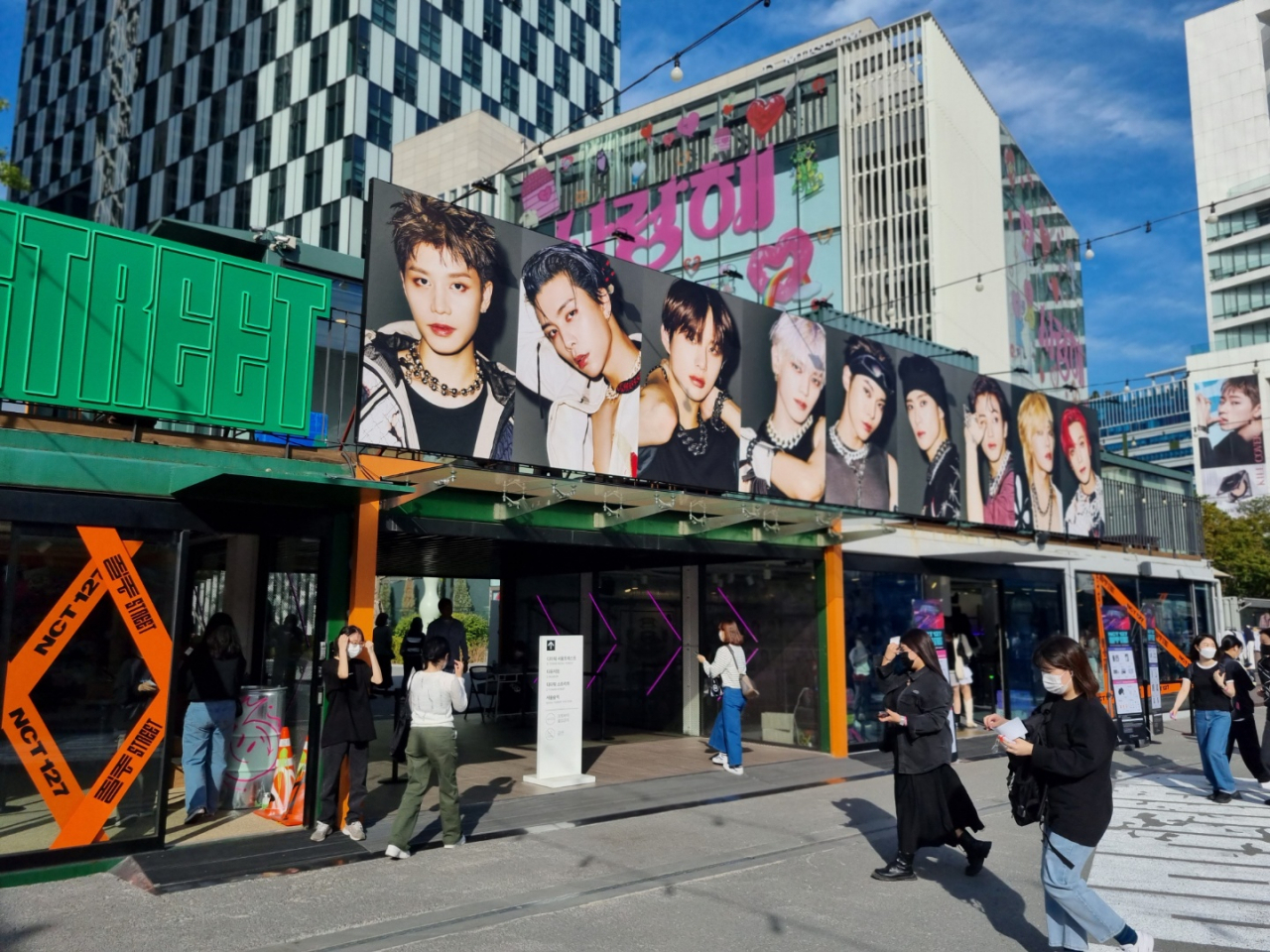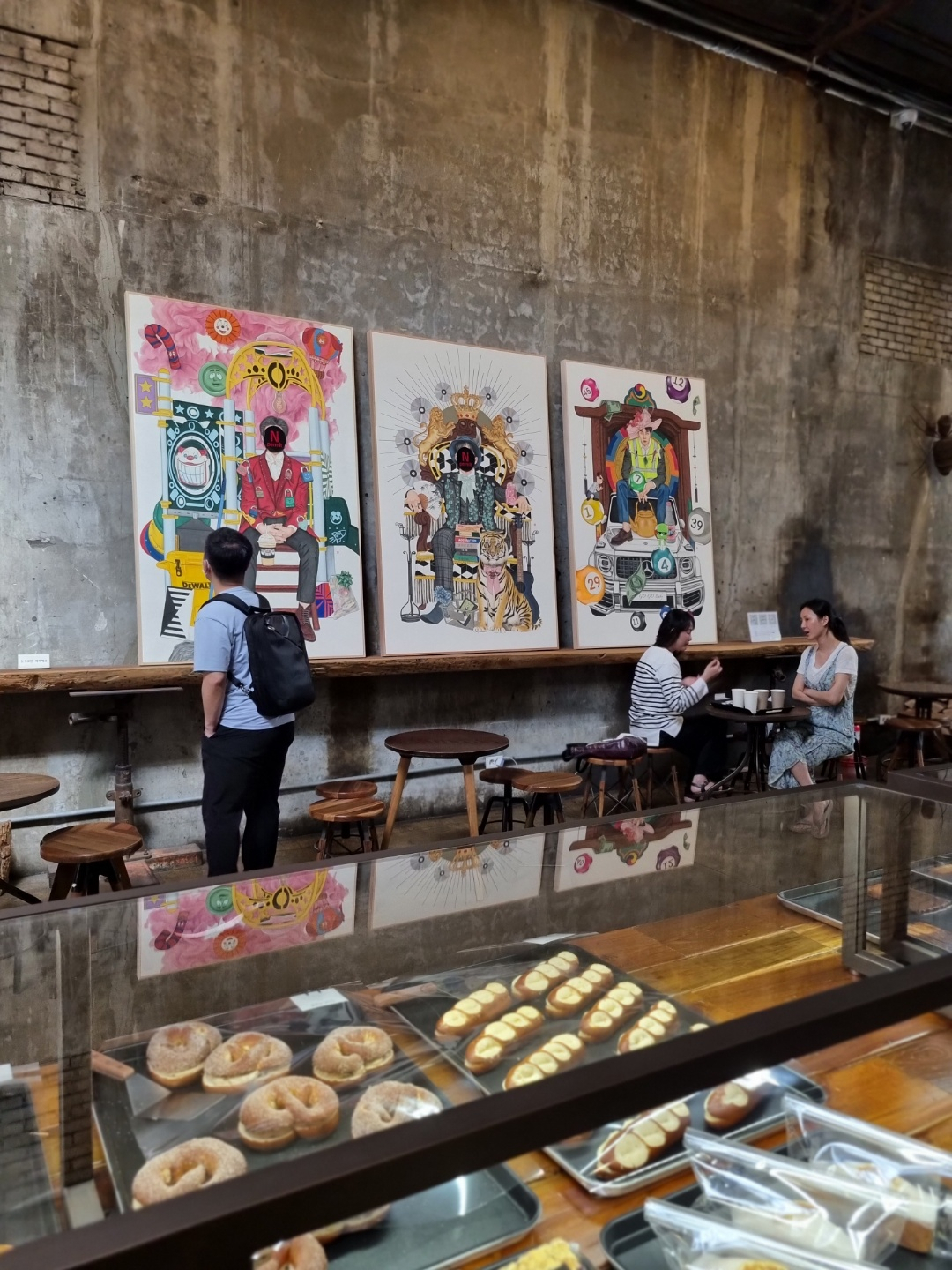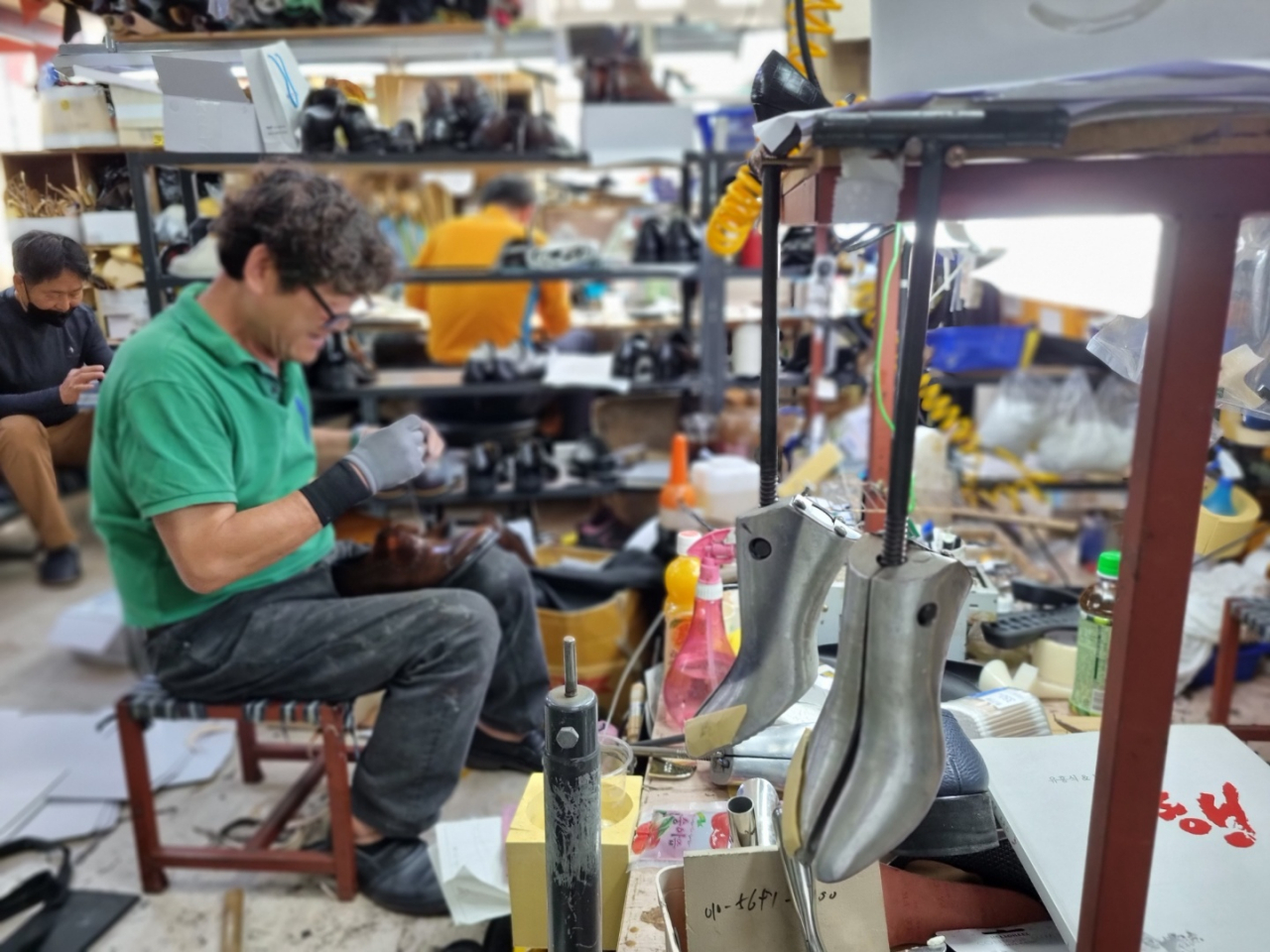 |
Fans gather to visit a pop-up store promoting boy band NCT 127’s recent release at Under Stand Avenue, in Seongsu, Seongdong-gu, Seoul. (Park Han-na/ The Korea Herald) |
The following is part of Seoul Subway Stories -- a Korea Herald series exploring subway stations and their surrounding areas across the city. – Ed.
Strolling through the vicinity of Seongsu Station, one can get an idea of what is considered hip in Korea these days: It has to be artsy, independent and youthful, with stories, preferably of heritage and history, to tell.
Seongsu-dong’s status as a mecca of hipness in Seoul can be seen through millions of Instagram posts introducing small cafes, restaurants and craft workshops nestled in old red-brick buildings here, that used to function as factories, storage facilities and handmade shoe stores.
Daelim Changgo was repurposed from a rice mill. The three-story building with a gross floor area of 1,252 square meters is a cultural space where visitors can enjoy art exhibitions while sipping beer or coffee. In 2011, French fashion house Chanel held a fashion show there.
 |
An art exhibition is being held at Daelim Changgo, in Seongsu, Seongdong-gu, Seoul. (Park Han-na/ The Korea Herald) |
From neglected town to hip enclave
Seongsu-dong’s unique appeal came about as a result of it being neglected in Seoul’s property development boom, which churned out clusters of high-rise apartment buildings.
Despite being just across the Han River from the glitzy Apgujeong-dong and Cheongdam-dong in Seoul’s posh Gangnam neighborhood, Seongsu-dong retained many of its small factories built out of red bricks, a symbol of modernized Western architecture widely used during the early development of the city.
From the late 90s on, as manufacturing moved out of the city center, more homes were built in the area, but not many apartment complexes.
In 2014, Seongsu faced a new turning point. Chosen as a zone for a pilot urban regeneration project, the area came to see a new breed of residents -- young artists and self-proprietors -- who injected new life into the neighborhood.
Now, Seongsu is the one of the city's most sought-after locations for various brands, businesses and even K-pop bands looking to hold pop-up events.
On a recent Monday, dozens of K-pop fans gathered at Under Stand Avenue, a cultural space made up of 116 containers located at the entrance of the nearby Seoul Forest, where a pop-up store has opened to promote boy band NCT 127’s latest album release.
The space had a package of experiences on offer for fans, including a photo booth with an imprinted image of band members, a game arcade and a large screen playing a video of the band’s dance practice sessions. At kiosks, visitors could order the album and pick it up in minutes.
“It was a very immersive space as it was decorated and designed all about NCT 127 and their new album. It is also good to see other Czennies (NCT fans) whom I only met online before,” a fan in her 20s said after visiting the place.
In another landmark in Seongsu -- S Factory -- chocolate bar brand Snickers recently ended a pop up store which promoted its collaboration with K-pop juggernaut BTS. Installations for photo zones were all painted in the K-pop sensation’s theme color purple.
 |
Yu Hong-sik, a master shoemaker, works on a male dress shoe in his workshop in Seongsu, Seongdong-gu, Seoul. (Park Han-na/ The Korea Herald) |
Shoemaking heritage
The interior of Seongsu Station on Seoul Subway Line No. 2 is decorated with shoe-related installations and paintings that explain the shoemaking heritage that runs deep in the neighborhood.
Shoe factories began clustering in this part of Seoul in the late 70s and 80s. Before, Geumho-dong had a large concentration of shoemakers, as it was the manufacturing base of Kumkang, one of the largest local shoe brands.
Soon, leather factories, subsidiary materials companies and shoemakers from Myeong-dong, Geumho-dong, Yeomcheon-gyo and Cheonggy-cheon swarmed into the area.
“From 1996-2000, shoe makers in Seongsu-dong increased to account for approximately 44 percent of shoe makers in Seoul that process the majority of handmade shoes produced in Korea,” an official at Seongdong District Office said.
The shoe business at Seongsu-dong was soon hit by a double whammy of the Asian financial crisis and the influx of low-priced shoes imported from China. The market also suffered a blow as more people opted for light, convenient sneakers and running shoes from brands like Nike and Adidas.
To survive, local businesses launched “Seong-su Shoe Town” in 2011 as a collaborated marketing effort. That has failed to reverse the trend, and the area now has about 250 shoe workshops and stores, about half the number from its heyday, the district office official said.
Yu Hong-sik, 74, has been making handmade shoes for 55 years. He is known as a cordwainer for former President Moon Jae-in.
“People would say that I’m utterly odd for doing this job for such a long time. I’m having fun while making shoes because I create unique designs that no one else can do,” Yu said.
Making dress shoes for men only, he is the first person who has been given the title of master shoemaker at Seongsu.
The cheapest pair of shoes cost 500,000 won ($353) and the most expensive cost 3.5 million won.
Yu said his customers are all almost as old as him and regulars who remember the days of bespoke shoes, before mass-market products became a norm.
“People say Korea has become a developed country now. From my perspective, a developed nation is where people know the value of craftsmanship. We are not there yet,” he said.
“Many young people are coming to Seongsu-dong, but they tend to visit the destination they want to go to and the inflow doesn’t seem to lead to handmade shoe purchases,” Lee Sung-ja, a district office official said.
Will Seongsu be able to keep its shoemaking heritage alive? Craftsmen are getting old, but younger generations do not appear to be interested in inheriting their trade.
“Many of the senior shoemakers left. But I’m still here doing the job that I love,” Yu said.



![[Herald Interview] 'Trump will use tariffs as first line of defense for American manufacturing'](http://res.heraldm.com/phpwas/restmb_idxmake.php?idx=644&simg=/content/image/2024/11/26/20241126050017_0.jpg)

![[Health and care] Getting cancer young: Why cancer isn’t just an older person’s battle](http://res.heraldm.com/phpwas/restmb_idxmake.php?idx=644&simg=/content/image/2024/11/26/20241126050043_0.jpg)

